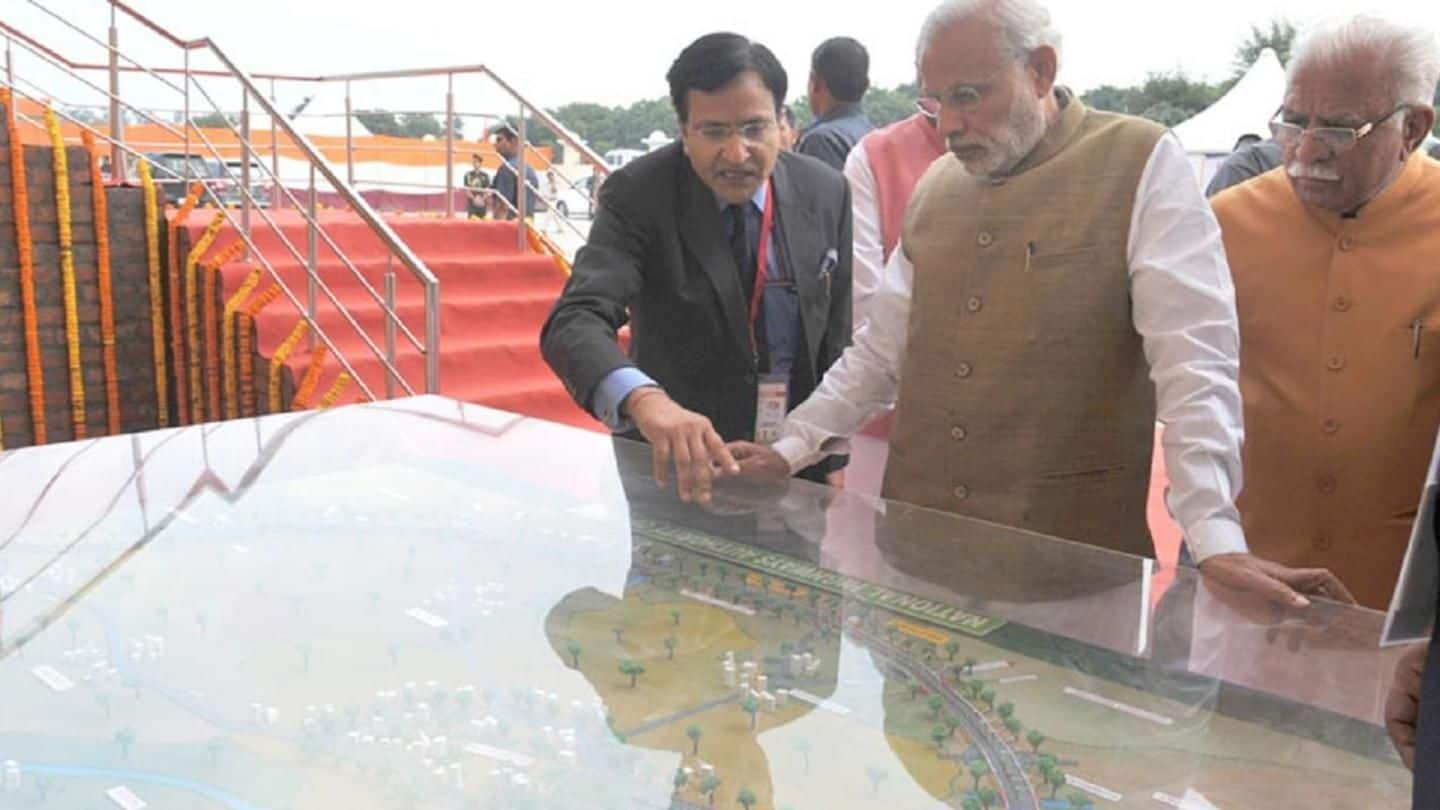
Eastern Peripheral Expressway: Modi to inaugurate India's first smart expressway
What's the story
Prime Minister Narendra Modi is set to inaugurate India's first smart and green highway, the Eastern Peripheral Expressway (EPE), on Sunday. After travelling in an open jeep on the Delhi-Meerut highway, PM Modi will fly to Baghpat to inaugurate the EPE. The Rs. 11,000cr project, stretching 135km, was completed in a record 500 days, and is crucial for Delhi. Here's more about it.
Traffic situation
The traffic and pollution situation in Delhi
The national capital is connected to the rest of India through nine major road networks, including both national and state highways. In the absence of peripheral roads, traffic coming in from these networks had to traverse through Delhi even if it wasn't bound for it. The result, understandably, is massive congestion in Delhi roads, and the resulting air pollution from vehicular emissions.
Impact
How the EPE is expected to help commuters and Delhi
The EPE, which provides signal-free connectivity between Ghaziabad, Faridabad, Gautam Budh Nagar (Greater Noida), and Palwal, is expected to reduce air pollution levels in the national capital by as much as 50%. Over 50,000 trucks and other traffic not bound for Delhi can now use the EPE to reduce travel time and bypass Delhi, thereby easing the pressure on Delhi's already-choked roads and air.
Do you know?
The EPE construction, broken down into numbers
The construction of the Eastern Peripheral Expressway was carried out by five construction agencies on behalf of the government, and required 11 lakh tonnes of cement, 1 lakh tonnes of steel, 50 lakh man-days and 9,375 manpower.
Infrastructure
The six-lane EPE has smart systems in place
The state-of-the-art six-lane expressway has an intelligent highway traffic management system (HTMS) and a video incident detection system (VIDS) in place, and will generate auto challans for over-speeding. It is also fully access controlled with entry and exit points at designated interchanges only. Weigh-in sensors are in place at points of entry to prevent overloaded vehicles from entering. Infrastructure-wise, it has 406 structures.
Eco-friendly
The EPE is equipped with eco-friendly infrastructure
The 135km-long EPE, which had been promised as a solution to Delhi's traffic and air pollution woes, is India's first highway to be lit by solar powered lights. Additionally, there are four 4,000 kilowatt solar power plants on the expressway. It also has rainwater harvesting provisions every 500m on both sides of the road, and will showcase 36 national monument miniatures and 40 fountains.
Other features
The EPE features electronic toll collection and pay-as-you-use tolling
The expressway also has a closed tolling system wherein commuters are only charged for the distance travelled and not for the entire stretch. Additionally, toll plazas are equipped with electronic toll collection systems to minimize time wastage and ensure disruption-free movement of traffic. Among several other features, it also has a pavement management system and a fiber optic network.